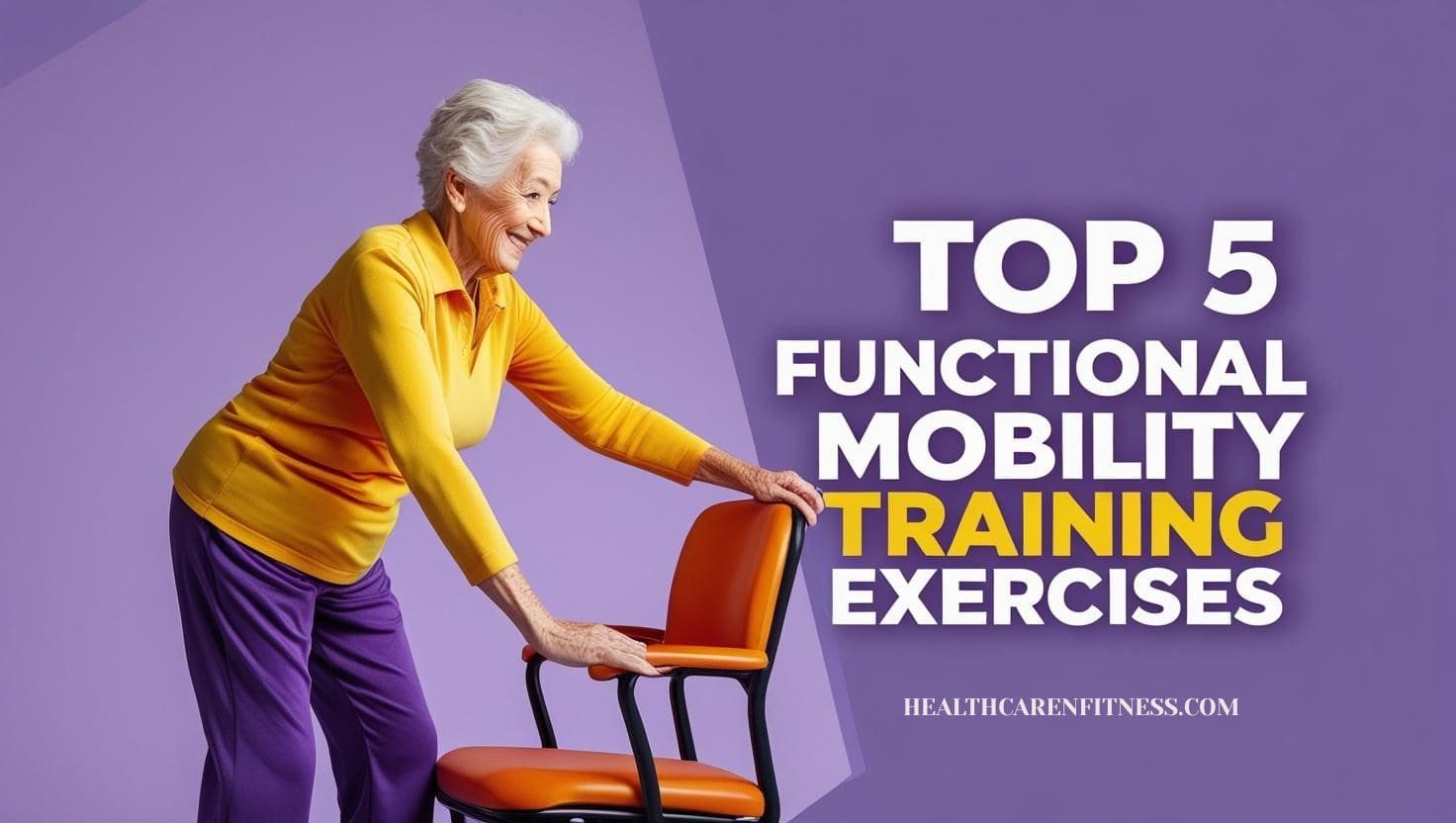
Functional mobility training is increasingly recognized as the foundation of fitness programs for people of all ages. Unlike traditional workouts that isolate muscles, functional mobility exercises focus on multi-joint movements that mimic real-life actions. Whether you’re an athlete, an active senior, or someone looking to improve your daily movement, this adaptable training method meets your body’s essential need for balanced, pain-free movement.
In this guide, we discuss the aspects of functional mobility training, practical exercises for improving functional mobility, the scientifically-supported advantages of this type of training, and targeted mobility tips for injury prevention. We will also examine balance and flexibility exercises tailored for seniors.
What Is Functional Mobility Training?
Functional mobility training aims to improve the ability to move effectively, safely, and robustly during daily activities and sports. Unlike conventional strength training that works individual muscles, functional mobility exercises emphasize movements that involve multiple joints and muscles (such as squats, lunges, and stretches) that mirror everyday activities.
Key Components of Functional Mobility Training
- Multi-joint Movements: Exercises like squats and lunges activate a variety of muscle groups.
- Core Stability: Strengthening the core improves posture and movement effectiveness.
- Flexibility and Balance: Dynamic stretching and stability exercises improve mobility.
- Strength and Endurance: Functional movements develop strength for everyday activities.
Top 5 Functional Mobility Exercises to Try
Here are some functional mobility exercises you need to include in your daily routine:
1. Bodyweight Squats
- Enhances strength in the legs, glutes, and core
- Boosts mobility in the hips and knees
2. Lunges with Rotation
- Enhances hip flexibility and core stability
- Great for injury prevention mobility
3. Dead Bugs
- Enhances core stability while boosting coordination
- Reduces stress on the lower back
4. Standing Leg Swings
- Enhances hip flexibility and stability.
- Perfect for warming up before exercise sessions.
5. Bird Dogs
- Enhances spinal stability and overall balance.
- Aids in the prevention of back injuries.
| Exercise | Target Area | Benefits |
|---|---|---|
| Bodyweight Squats | Legs, Glutes, Core | Improves lower-body mobility |
| Lunges with Rotation | Hips, Core | Enhances rotational strength |
| Dead Bugs | Core, Lower Back | Boosts coordination & stability |
| Standing Leg Swings | Hips, Hamstrings | Increases dynamic flexibility |
| Bird Dogs | Spine, Shoulders, Hips | Strengthens core & prevents injuries |
Benefits of Functional Mobility Training
Participating in functional mobility training provides various benefits:
1. Reduces Risk of Injuries
Enhancing joint stability and muscle coordination makes injury prevention through mobility more efficient.
2. Enhances Daily Movement Efficiency
Functional exercises replicate everyday movements, assisting with daily activities such as lifting, bending, and walking.
3. Improves Balance & Coordination
For seniors, balance and flexibility exercises reduce fall risks and improve independence.
4. Boosts Athletic Performance
Athletes gain advantages in terms of agility, strength and precision in their movements.
5. Supports Joint Health
Mobility exercises help to keep joints flexible, lowering the chances of stiffness and the risk of arthritis.
How to Incorporate Functional Mobility Training into Your Routine?
- Begin with a Warm-Up: Engage in dynamic stretches such as arm circles and leg swings.
- Initiate with Bodyweight Movements: Ensure you perfect your technique before introducing resistance.
- Advance Slowly: Raise the challenge with resistance bands or weights as you progress.
- Prioritize Quality instead of Quantity: Correct form is essential to avoid injuries.
- Finish with Static Stretching: Enhances flexibility and supports recovery.
Balance and Flexibility Exercises for Seniors
Aging gracefully involves remaining active and minimizing the chances of falls or a decline in independence. Exercises that enhance functional mobility are essential for older adults, as they significantly boost balance, flexibility, and strength.
| Exercise | How to Do It | Focus |
|---|---|---|
| Sit-to-Stand | Rise from a chair without using your hands and slowly sit back down. Repeat 10-15 times. | Leg & core strength |
| Heel-to-Toe Walk | Walk in a straight line, placing one foot directly in front of the other. Go for 20 steps. | Balance & control |
| Ankle Rolls | Stand, lift one foot, rotate the ankle 10 times each direction. Switch sides. | Ankle flexibility |
| Calf Stretch | Lean on a wall, stretch calf of back leg. Hold 30-60 seconds per side. | Lower leg mobility |
| Shoulder Rolls | Sit upright, roll shoulders back in a circular motion, 5 times per direction. | Shoulder flexibility |
| Knee-to-Chest | Lie on back, pull one knee to chest and hold. Alternate legs. | Hip/lower back flex. |
FAQs
Who needs functional mobility training?
Anyone looking to improve their mobility, whether they are athletes, office workers, seniors, or people recovering from injuries, can benefit from improved movement quality and injury prevention.
Can functional mobility training help with chronic pain and stiffness?
Absolutely, it helps with underlying issues by improving flexibility, increasing range of motion, and increasing stability, which can help gradually reduce pain.
How often should I add functional mobility exercises to my routine?
You should aim for at least 3-4 times per week, devoting 10-20 minutes per session
Conclusion
Functional mobility training is essential for maintaining range of motion, reducing the risk of injury, and improving overall quality of life. Whether you’re a competitive athlete or a senior, adding functional mobility exercises to your routine can improve strength, flexibility, and balance. By focusing on mobility to prevent injuries and incorporating balance and flexibility training for seniors, you can improve your movement, increase your strength, and stay active for many years.
